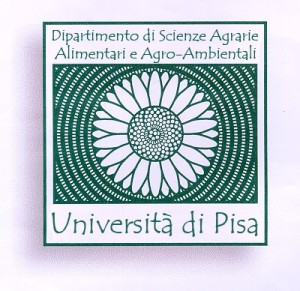Attended results
- Understanding of the ability of city trees to adapt to present environmental conditions, through non-destructive analyses of relevant ecophysiological parameters, histopathological investigations (also in confocal microscopy, multispectral fluorescence microimaging, SEM, TEM), molecular studies (including transcriptomics) and meaurements of leaf reflectance.
- The knowledge of mechanisms adopted by selected oak species to withstand severe photo-oxidative stress following a classical bottom-up approach: from the expression of genes involved in the antioxidant defence system, up to their sub-cellular, cellular and whole-organ distribution.
- The understanding of the functional roles of phenylpropanoids in oak species suffering from a wide array of environmental insults, specially of oxidative nature.
- The estimate of the interaction between isoprene emission and air quality in urban environments. This knowledge is of key significance for the selection of oak species for urban green areas planning.
- Measurements of chlorophyll fluorescence and gas exchange parameters will provide more information on the integrity and functional status of the photosynthetic apparatus of lichens and trees studied. These analyses will enrich the knowledge about the interplay between mesoclimate and pollution on native lichens or lichen transplants on host trees, and the combined stresses in lichens and oak species under controlled environmental conditions that mime the future climatic scenarios of the 2050 horizon. These performances will be evaluated by studying the evapotranspiration, the electron transport, the thermal dissipation of excess excitation Energy (NPQ, qN), the alternative photochemical way (qP) or related to the light energy capture systems (Fv/Fm).
- The analysis of the reactive chemical species, such as biomarkers of oxidative stress (H2O2, NO), as well as water-soluble non-enzymatic antioxidants (GSH and AsA), content of chlorophyll a and b, ß-carotene, lutein and the pigments that characterize the xanthophylls cycle in plants and lichens exposed in a controller environment, will enrich the knowledge of the response of these organisms to abiotic stress. It will be possible to conclude whether a high intrinsic antioxidant capacity and/or the ability to modulate the antioxidant system are required to tolerate or offset the harmful effects of oxidative stress.
- The determination of ethylene, salicylic acid, jasmonic acid and ABA content (signaling molecules), as well as of levels of H2O2 and NO (oxidative signals), will provide indications on the ability of the lichens and tree species to ensure the transduction signal-dependent stress. The study of the combined action of secondary metabolites, with primary products, provides details of which, of the two subjects, is more involved in the adaptive response to climate change.
- Characterization of the transcriptomics of a Trebouxia photobiont in dependence to photo-oxidative stress. The aim of the research is to generate a background field for forthcoming studies of transcriptomics in lichenology, focusing on the transcriptomes of the lichen photobionts. A database will be produced containing the transcribed genes of photobionts of the genus Trebouxia, one of the most frequent genera of algal partners in the lichen symbiosis. The main outcomes of the project will considerably improve the current knowledge about the complex pattern of proteins coded by the lichen photobiont, with particular reference to photo-oxidative and thermal stress.
- Identification of tree species for urban environments, capable of fixing inorganic C and with high adaptability to stress with emphasis on ornamental performances; evaluation of the physiological response to the techniques of pre-conditioning (hardening) of the plants, in order to ensure a rapid adaptation.
- Contribution to the quantification of the ecosystem services provided by the urban vegetation to the city in terms of: 1) atmospheric pollutants removal capacity (improving city air quality); 2) CO2 capture and sequestration; 3) Mitigation of the climate change effects in the urban environment.
- Evaluation of the detrimental effects of ozone on CO2 capture and sequestration by vegetation.
- Application of the ‘eddy covariance’ technique in urban areas to study energy and gases fluxes. This application is particularly innovative because, currently, only few studies have addressed the problem of direct measurement of energy and pollutants fluex in the urban environment.
- Application of a Soil-Vegetation-Atmosphere Transfer model for the simulation of CO2, H2O and ozone fluxes between urban vegetation and atmosphere.
- The UFORE (Urban FORest Effects) model will be validated in Mediterranean environmental conditions. UFORE has been originally developed in the United States by Prof. David Novak (an international partner of TreeCity), and estimates the capacity to improve air quality, other environmental benefits and economic value of urban forests.
TreeCity is an interdisciplinary project aimed at increasing knowledge on the role(s) of trees in urban environments, also in the climate change perspective. Tree City deals with several issues and performs both basic and applied research, able to produce innovation in a strategic sector such as urban air quality and human wellbeing.
The ‘core business’ is represented by the contribute to the evaluation of stress factors, and their interactions, which influence the vital performances of plants in urban areas, nowadays and under the future global change scenarios. Analysis of collected data will provide useful information on the state of urban vegetation as subjected to several stress insults induced by city environment and microclimate. Practical implications of expected results are noteworthy.
Shortly, the major results which TreeCity is able to deliver are here described.
Under the practical point of view the contribution to the quantification of the ecosystem services provided by the urban vegetation to the city in terms of benefits to air quality provided by urban and periurban ecosystems will be (today and tomorrow) a precious support to the local managers to define in a proactive approach the best strategies for urban green management. Key information will be provided in order to select the best tree species for the city of the future. Some biological findings on molecular mechanisms involved in the response of green organisms to oxidative stress could be an inspiring issue for genetical improvement of plants to introduce resistance to environmental stresses. Results of molecular investigations with a test lichen species will lead to important implications, and will especially supplement those current protocols which use lichens as environmental biomonitoring agents.




